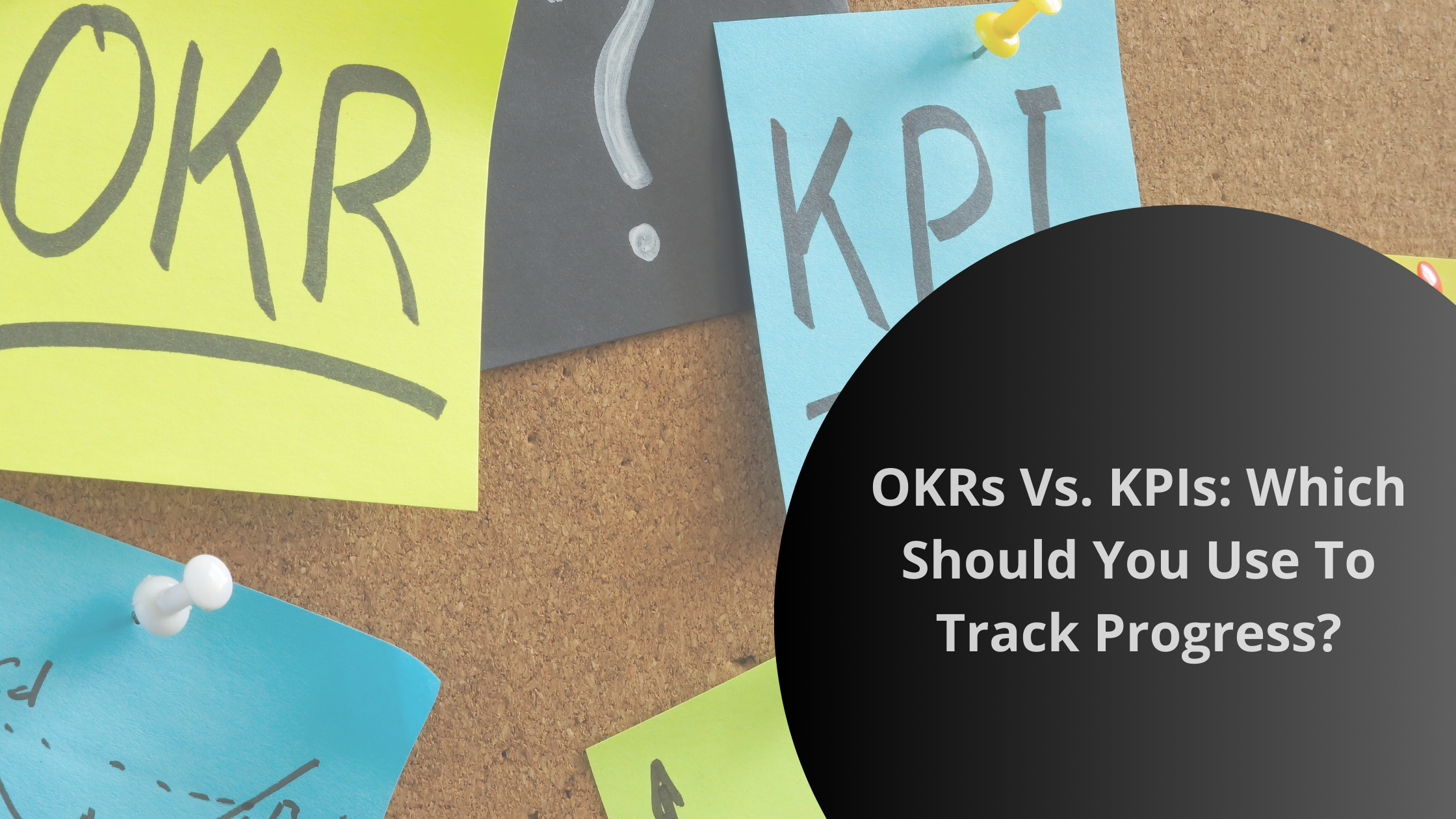In business, understanding all the different buzzwords and jargon can be a pain and a hurdle to career advancement.
Two such terms are OKRs and KPIs. What’s the difference? I’m sure you might’ve used them interchangeably at some point – many have, but the fact is one is a bit grander in scope.
Let me explain.
What Are OKRs?
OKRs, standing for objectives and key results, are measurable business goals and desired outcomes, usually set by an organization at the start of a project, product, or task. They are a good indicator of the health of a business.
For each objective, businesses typically assign three or more key results that indicate whether that objective has been met. John Doerr, the one responsible for the popularity of OKRs in the digital age, thinks of objectives as the what, while the key results are more of a how.
What Are KPIs?
KPIs, or key performing indicators, are person- or team-centered metrics that indicate how well someone is performing their role and responsibilities with regard to a specific outcome or goal within an organization.
Typically, KPIs are used by managers and HR to track employee performance. To that end, KPIs usually have an assigned target or deadline. Many teams use both KPIs and OKRs in conjunction with other metrics, such as health scores or employee satisfaction scores.
Main Differences Between KPIs & OKRs
While easy to understand, it’s best to have the concrete differences between the two in a side-by-side comparison which you can use for future reference:
How To Use OKRs?
As stated previously, objectives should have at least three key results assigned to them. These can further split into:
- Outcome-based results. Typically quantifiable and easy to measure by looking at hard data. Example: increase sales by 30%.
- Effort-based results. These are more conducive to simple done / incomplete states as they’re tied to whether you’ve completed the assigned task or not. Example: implement a new sales process in the current fiscal year.
So, for each objective, brainstorm some quantifiable metrics you can measure, or some efforts you need to complete.
Outcome-based results typically have a score assigned to them, measured on a weekly, monthly, or quarterly basis. To calculate it, simply divide the current value by the desired result (if your goal is to increase the number) or the desired result by the current value (if your goal is to decrease the number). After these steps, you can interpret the results as follows:
- If your result is >1, you’re overperforming.
- If your result is between 0.7 and 0.99, you’re on track to complete your objective.
- If the result is between 0.3 and 0.7, you’re at risk of not completing your goal.
- If the result is under 0.3, there are significant issues you need to solve before expecting better results.
Naturally, the lower your key result score, the more your risk factor increases. To make it easier to understand, I’ve made a sample spreadsheet using some key result examples from my customer success team:
Examples of objectives and key results. Use this OKR template spreadsheet by editing a copy of the document here.
How To Use KPIs?
KPIs are fantastic for tracking team member performance and project outcomes. It allows you and your team to track the programs you already have in place and determine where you are on the road to your desired outcomes.
KPIs can be assigned as key results to OKRs or used as standalone performance trackers.
To effectively make use of KPis, try the following steps:
- Determine what you want to measure. Decide between employee / team performance and project progress and outcomes – but bear in mind one does not necessarily exclude the other.
- Brainstorm relevant metrics that make sense. Do this yourself or with your team – find easily trackable and relevant metrics, then determine a target for what success looks like for every data point you’re tracking. Here are some examples of KPIs:
- average retention rate for each customer segment in your SaaS, with a target to increase retention rate by 15% for each segment.
- average customer support response time, with a target to decrease it to under 8 hours.
- monthly cost of bug fixes, with a target to reduce it by 25%
- Assign easily trackable data points and ensure data hygiene. Once you know what you want to track, make sure your tracking setup works and allows you to monitor your KPIs. Follow a data hygiene approach – verify all numbers and datasets for accuracy. The best approach to do this at scale is to find a platform within your niche that lets you track, monitor, and set goals for each metric (such as a customer success platform for CS teams or project management software for multidisciplinary teams).
How To Decide Between KPIs & OKRs?
This decision comes down to how complex your product, services, and needs are. You have a few viable options to pick from, listed below.
Start with just KPIs if:
- You’re simply starting out, building your SaaS product, and you don’t have well-defined teams or processes yet.
- Your product and services are simple, and such complex objectives might act more as detractors, slowing down your delivery times and decreasing productivity.
- You’re simply looking to measure employee performance in a quick and easy way.
Start with just OKRs if:
- You lack a strategic view and need to align on goals across the entire organization.
- You want a more thorough and future-proof approach to measuring goal alignment and performance.
- You’re about to launch your product and need some ambitions and measurable goals for your entire team.
How & When To Use These Two Frameworks Together?
Since they also complement each other, you can, of course, use the two frameworks together.
“OKRs and KPIs, when synergistically deployed, can significantly elevate the operational efficacy of CS teams. By aligning the objective-driven approach of OKRs with the performance metrics of KPIs, CSMs can foster a holistic framework that not only tracks progress but propels customer success to new heights.”
Philipp Wolf – Founder & CEO at Custify
Use KPIs and OKRs together if:
- You have a complex organization that requires advanced goal alignment and performance tracking.
- You can effectively use KPIs as key results for your OKRs – this is a model for increased efficiency, but might not work for everyone, so you should test it out. As you can see in my examples above, most key results are already similar to KPIs, so this tactic should be fairly simple to implement.
- You want to encourage collaboration between team members so they work together to complete the goals you’ve set.
You can further improve cross-departmental alignment and collaboration and include more metrics that tie in well with KPIs and OKRs, such as:
Examples Of KPIs, OKRs, & Other Business Metrics Working Together
As you can see, there are no effort-based results among these examples, as those don’t fit particularly well for use with KPIs. However, that doesn’t mean you can’t set those key results and use them without assigned KPIs.
Conclusion
We’ve seen that both OKRs and KPIs can be useful, especially if optimized to work together. The only real question is how much you need both of them and if the added complexity is worth it.
For a strategic organization with clear product goals, OKRs might be best, with clear KPIs assigned to each key result. However, that approach might be a bit of an overkill for newer businesses with up-and-coming products and small teams.
So: use caution when deciding between the two and then follow through on your approach by promoting company-wide alignment on both OKRs and KPIs.








